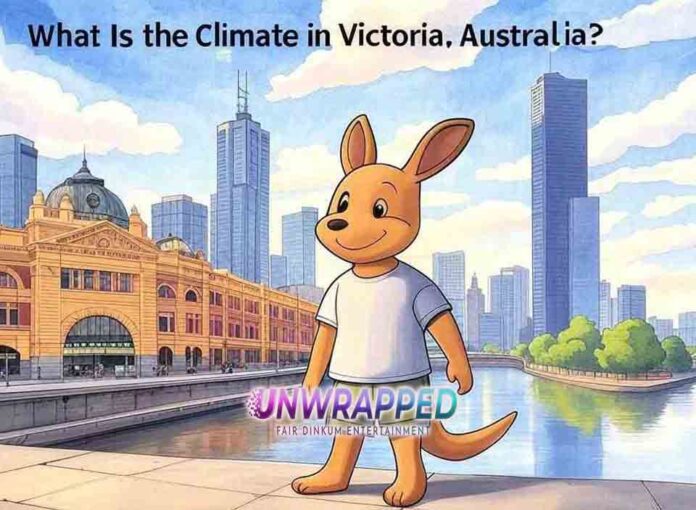Victoria, Australia’s second smallest state, offers a diverse climate that reflects its stunning landscapes and varied geography. From the bustling streets of Melbourne to the alpine peaks of the High Country, the climate in Victoria plays a significant role in shaping its culture, lifestyle, and attractions. Whether you’re a local or planning a visit, understanding Victoria’s climate will help you make the most of your time in this beautiful region.
In this article, we’ll explore the distinct climate zones of Victoria, seasonal variations, and tips for enjoying the weather in different parts of the state.
Overview of Victoria’s Climate
Victoria’s climate is classified as temperate, meaning it has four distinct seasons with a mix of warm summers, cool winters, and moderate rainfall. However, the state’s diverse geography creates regional variations, from the dry and warm northwestern areas to the cool and wet alpine regions.
Key Climate Features:
- Four Seasons: Victoria experiences spring, summer, autumn, and winter.
- Regional Variations: The climate ranges from semi-arid in the northwest to alpine in the High Country.
- Average Temperatures: Summer temperatures range from 14°C to 29°C (57°F to 84°F), while winter averages 5°C to 15°C (41°F to 59°F).
Climate Zones in Victoria
1. Coastal and Southern Victoria (Including Melbourne)
The southern regions, including Melbourne, have a temperate maritime climate influenced by the Bass Strait.
- Summer (December to February):
- Warm to hot days with average highs of 26°C (79°F).
- Cool sea breezes in the evenings.
- Winter (June to August):
- Cool and cloudy with temperatures between 6°C and 14°C (43°F to 57°F).
- Moderate rainfall, especially in coastal areas.
Best For: City explorations, cultural events, and coastal walks.
2. Northern and Northwestern Victoria
The northern and northwestern parts of Victoria, including Mildura and Swan Hill, experience a semi-arid climate with hot summers and mild winters.
- Summer:
- Very hot and dry, with temperatures often exceeding 35°C (95°F).
- Winter:
- Mild and dry, with average highs of 15°C to 18°C (59°F to 64°F).
Best For: River adventures along the Murray River and exploring the Mallee region.
3. Alpine and High Country (Northeast Victoria)
The Alpine region, including Mount Buller and Falls Creek, has a cool to alpine climate, with distinct winters and mild summers.
- Summer:
- Pleasant temperatures averaging 10°C to 20°C (50°F to 68°F), ideal for hiking and cycling.
- Winter:
- Cold and snowy, making it perfect for skiing and snowboarding.
Best For: Outdoor adventures, winter sports, and alpine escapes.
4. Gippsland (Eastern Victoria)
Gippsland, known for its lush landscapes and stunning coastline, has a temperate climate with moderate rainfall throughout the year.
- Summer:
- Warm days averaging 25°C (77°F).
- Ideal for beach activities and exploring Wilsons Promontory.
- Winter:
- Cool and wet, with temperatures ranging from 8°C to 15°C (46°F to 59°F).
Best For: Coastal drives, wildlife spotting, and rainforest hikes.
Seasonal Guide to Victoria’s Climate
Summer (December to February)
- What to Expect: Warm to hot weather, with occasional heatwaves in northern regions. Coastal areas remain cooler due to sea breezes.
- Best Activities:
- Surfing and beach outings along the Great Ocean Road.
- Wine tasting in the Yarra Valley.
- Outdoor festivals and events in Melbourne.
Tip: Pack sunscreen, hats, and plenty of water for outdoor activities.
Autumn (March to May)
- What to Expect: Mild temperatures and beautiful foliage, especially in regions like Bright and the Dandenong Ranges.
- Best Activities:
- Hiking in the Grampians.
- Scenic drives through Victoria’s wine regions.
- Attending cultural events like the Melbourne Food and Wine Festival.
Highlight: Autumn is a great time for photography enthusiasts to capture the vibrant colors of Victoria’s landscapes.
Winter (June to August)
- What to Expect: Cold temperatures and increased rainfall, particularly in southern and alpine regions. Snowfall occurs in the High Country.
- Best Activities:
- Skiing and snowboarding at Mount Buller or Falls Creek.
- Cozying up at boutique accommodations in Daylesford and Hepburn Springs.
- Exploring Melbourne’s museums and galleries.
Pro Tip: Pack warm layers and waterproof clothing for winter adventures.
Spring (September to November)
- What to Expect: Mild temperatures and blooming wildflowers, with occasional showers.
- Best Activities:
- Visiting the Royal Botanic Gardens in Melbourne.
- Wildlife spotting at Wilsons Promontory.
- Hiking and outdoor events in regional Victoria.
Highlight: The Melbourne Cup Carnival in November is a must-see event during spring.
Weather Extremes in Victoria
Victoria’s weather can be unpredictable, especially in Melbourne, which is known for experiencing “four seasons in one day”. Sudden changes in temperature, rain, or wind can occur, so it’s always a good idea to carry a light jacket and umbrella.
How to Prepare for Victoria’s Climate
Packing Essentials:
- Summer: Lightweight clothing, sunscreen, hats, and sunglasses.
- Winter: Warm jackets, scarves, gloves, and waterproof boots.
- All Seasons: Layers, as temperatures can vary throughout the day.
Stay Weather Aware:
- Check forecasts from reliable sources like the Bureau of Meteorology.
- Follow local advice for bushfire safety during hot, dry summers.
Why Victoria’s Climate Is Unique
Victoria’s diverse climate zones offer something for everyone, whether you’re seeking sunny beach days, alpine adventures, or city escapades. The variety of weather conditions enhances its appeal, making it a destination that can be explored year-round.
Call to Action
Have you experienced Victoria’s diverse climate? Share your favorite seasonal activities and destinations in the comments below! Don’t forget to subscribe to our blog for more travel tips and inspiration. Planning your trip? Bookmark this guide to prepare for all that Victoria’s climate has to offer.










